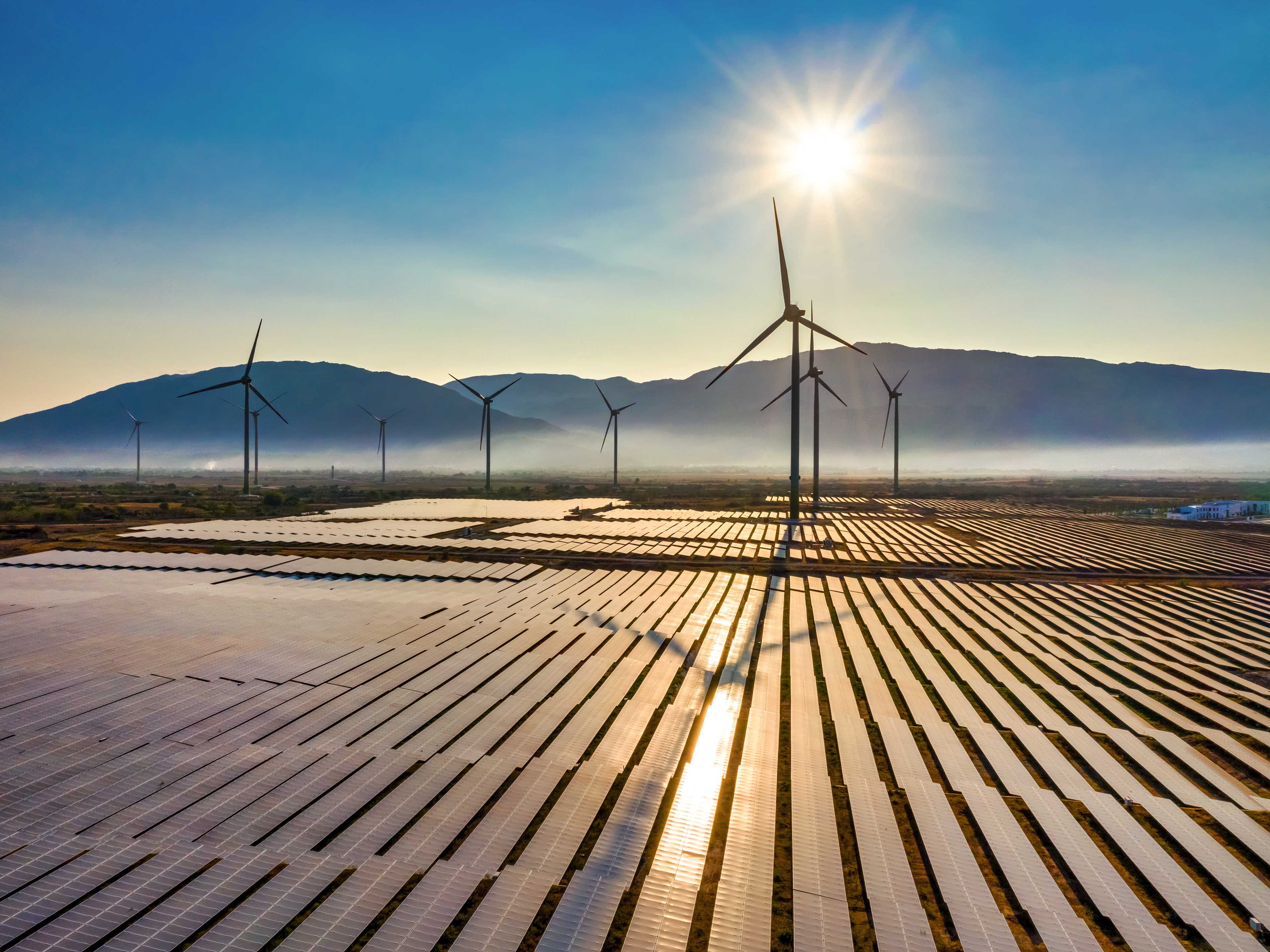Advancing Green Hydrogen Production from Solar and Wind Power Sources and Potential Uses in Viet Nam
February 23, 2023

Ha Noi, 23 February 2023 - The United Nations Development Programme (UNDP) and the Institute of Energy organized a consultation workshop on green hydrogen production and use in Viet Nam, and global experience. The workshop included presentation and discussions on the preliminary results of a study on the potential of green hydrogen production from renewable energy sources and the use of green hydrogen in Viet Nam. This would contribute to the reduction of economy-wide greenhouse gas emissions and accelerate the green energy transition in Viet Nam.
Representatives of the Institute of Energy, UNDP, the National Institute of Urban and Rural Planning, the Institute of Transport Strategy and Development, the Department of Safety Engineering and Industrial Environment, GIZ, and business sectors such as Viet Nam Oil and Gas Corporation, Trung Nam Construction Investment Joint Stock Company, Viet Nam Chemical Corporation, Minh Thach Group, Dong Phuong Petroleum Joint Stock Company, Vietse, Mainstream Renewable Power, Son My Industrial Park Infrastructure Investment and Construction Joint Stock Company (IPICO), Climate Sense (Climate Sense Co., Ltd.) and Vietcombank attended the workshop.
Green hydrogen production is an eco-friendly method of producing hydrogen fuel using electricity made from solar or wind power, whereby electrolysis is used to split water into hydrogen and oxygen. This technology can significantly reduce carbon emissions and contribute to climate change mitigation.
The global share of green hydrogen production from water electrolysis is not significant, and in 2020, it only accounted for 0.03 percent of the world's hydrogen production. By 2030, however, when electrolysis technologies will have advanced significantly and the cost of renewable energy is expected to have gone down, green hydrogen will be a more financially viable option. Countries with high potential for renewable energy, good trade relationships, political stability, and that are close to major importers in the Asia-Pacific Region are in an excellent position to benefit from the technology.
Viet Nam’s economy is growing rapidly; for example, in 2022, its growth rate was more than eight percent. This economic growth is coinciding with increases in energy demand and requires innovative solutions to ensure energy security. Energy in Viet Nam, mainly produced from coal, is estimated to represent about 70 percent of Viet Nam's total emissions by 2030. Since 2019, it has been encouraging that the the Government of Viet Nam has quadrupled its solar and wind capacity.
The Government of Viet Nam committed to achieving net-zero emissions by 2050 at COP26. In December 2022, Viet Nam, the G7, the EU, Denmark and Norway concluded a Just Energy Transition Partnership (JETP), under which an initial pledge of $15.5 billion will be mobilized to support Viet Nam’s energy transition, aiming to reduce its peak annual power sector emissions by up to 30 percent, increase the share of renewables in electricity generation to at least 47 percent by 2030 from 36 percent, revise the country's peak coal capacity and reach peak emissions in 2030 rather than 2035.
"Green hydrogen production and use are a new opportunity for Viet Nam to move towards a green economy. To deploy the production and use of green hydrogen, it is necessary to understand and update knowledge about the necessary conditions, advantages, difficulties and challenges in terms of resources, finance, legal conditions, development orientation, preparation and development support," said Mr. Le Viet Cuong, Deputy Director General of the Institute of Energy.
At the workshop, UNDP and the Institute of Energy presented three main findings from a joint study to assess the potential role of green hydrogen production and use. The three main findings include a realistic estimate of green hydrogen, the levelized cost of hydrogen, and the critical role of governments in setting targets, developing strategies and regulations, and providing market-based incentives.
The analysis also found that if the electrolysers ran at 90 percent capacity throughout the year, at least 11.49 million tons of green hydrogen could have been produced in 2020. As much as 18.78 million tons could have been produced by 2050. Although the cost of producing green hydrogen is expected to decrease significantly due to declining input technology costs, the cost in Viet Nam is still higher than the objectives set by other economies.
The report highlighted that governments need to set targets, develop regulations and provide incentives to promote decarbonization. However, developing legislation, standards and trade rules on hydrogen is still in the early stages globally. Many countries have implemented stop-gap measures to ensure a robust investment environment. Industry investors must also set technical targets for electrolyser production cost reductions through capacity building, research and development, and appropriate sectoral applications.
Mr. Patrick Haverman, UNDP Deputy Resident Representative in Viet Nam, said, "Green hydrogen is considered a new generation energy source, and an optimal alternative energy source soon. The production of green hydrogen and energy carriers such as ammonia and renewable energy plants can partially meet Viet Nam’s energy storage and consumption demand in transportation and other sectors. It can also help Viet Nam achieving its commitments made at COP26. UNDP will continue working with the Institute of Energy in green hydrogen production and use and accelerating the green energy transition in Viet Nam."
For more information, please kindly contact:
Phan Huong Giang
UNDP Media and Communications Analyst, Climate Change and Environment
Email: phan.huong.giang@undp.org
Mobile: 0948466688

 Locations
Locations



